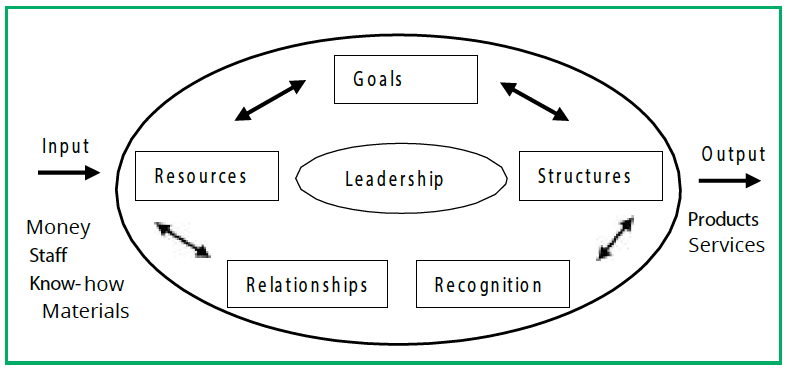Summary
The Six Field Analysis is a diagnostic framework, or as the creator Marvin Weisbord calls it, a ‘cognitive map’ used to assess strengths and weaknesses in the functioning of an organisation.
It chooses six generic areas of organisations that are rated and analysed in more detail. However, in line with system’s thinking the effective interaction of all six areas is seen as a condition for a healthy and well-functioning organisation.
Goal/Learning Objective/Expected Output
Bringing out the perspectives of all members of an organisation on the overall organisation’s performance. This is in the form of a snapshot, collaboratively analysing and agreeing what areas of the organisation need improvement.
When repeatedly done the tool can also be used as an ‘early alert’ helping to detect early signs of problems or emerging discontent among the organisation’s members.
Way/level of dealing with subject at stake
Analytical tool that helps to create a visual representation of individual assessments of an organisation as a basis for further discussion.
It is not recommended for situations where there is already an open conflict.
Application in moderation cycle
Divergence to emergence
Duration
1.5 hours to half a day, depending on the group size and the intended depth of the diagnosis.
Recommended group size
Ideally, all members of an organisation should be involved. The tool can be adapted to all group sizes.
Level of difficulty
Easy
Facilitator
To conduct an organisational diagnosis an external moderator is recommended in order to bridge and integrate a variety of different perspectives. If it is not possible to involve a professional moderator, a senior person who is seen as a mentor or supporter of the organisation can lead the process.
Materials needed
Flipchart paper, markers.
Process description
Preparation: the most important preparation is to ensure that members of the organisation are willing to conduct a diagnosis of the organisation, and will contribute to it.
First, the six fields or basic criteria for assessment need to be understood:
- Goals: How well the organisational purpose (vision/mission) is understood by everyone, is coherent and fits with the organisation’s competences;
- Structures: The bigger picture of power relationships between employees and formal relationships between functional groups. This will show who is ultimately responsible for achieving the goals in an organisation, and the alignment between structure and processes;
- Recognition: Incentive mechanisms in an organisation (what behaviour is rewarded and how);
- Relationships: Team dynamics, communication and collaboration within the organisation;
- Resources/technical systems: Communication pathways, policies and procedures as well as planning, budgeting and controls;
- Leadership: Who are leaders in the organisation, how have they got there and how effective are they at the tasks for which they are responsible (such as: keeping these five different elements in balance).

Participants are then invited to rate these different areas of the organisation. Rating can be done anonymously, for instance on a scale between one and six (in order to avoid the tendency to choose the middle rating). The results of the assessment should then be presented to the whole group.
Depending on the overall atmosphere and conditions in the team the results could be discussed directly in the plenary. However, in order to provide room for more profound discussion, another option is to split up in small groups to discuss the background of the ratings.
The results of the group discussion are brought back to the plenary to be validated, cross- checked and further enriched with additional perspectives.
The final step is to collaboratively draw conclusions on how to deal with critical feedback that came up during the assessment and develop suggestions for improvement.
Options for modification
The process described above is just one way of using the diagnostic framework. In principle, it offers a number of different lenses through which to look at, sort and label what is going on in an organisation. This framework can also be translated into a questionnaire that is filled in by every member of the organisation; or assessment of the different fields could be explored through individual interviews, simply discussed in small groups, or further adjusted in many different ways.
The key for using this tool is to ensure there is an overall atmosphere of mutual trust where feedback is not used to blame and attack individual people, but also where leadership is ready to receive and constructively deal with any critical feedback.
Debriefing options
Final debriefing questions would above all be related to evaluating the overall process of conducting the organisational diagnosis, the quality of open discussions as well as the commitment to follow-up action.